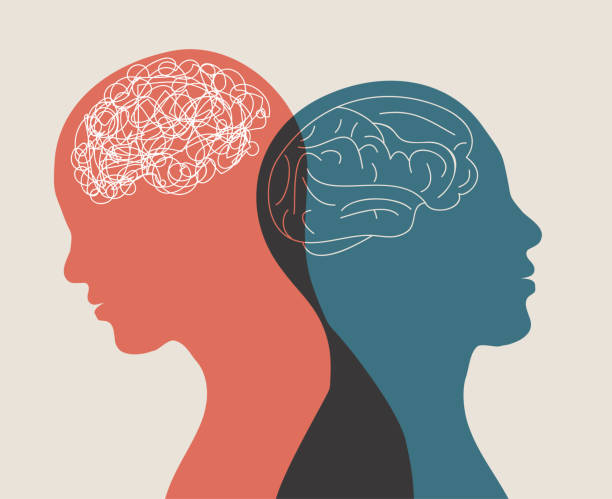Introduction
Have you ever “felt” something in a conversation without anyone saying a word? Maybe it was a long pause after you spoke. A sarcastic “okay.” A look. A text with a period instead of an exclamation point.
If you’ve ever second-guessed what someone really meant—even when they technically said “all the right things”—you’re not alone. This is the world of unsaid: the subtle, unspoken language of tone, silence, timing, and nonverbal cues that shapes human connection in powerful, often unconscious ways.
Read More- Non-Verbal Communication
What Is Implicit Communication?
Implicit communication is the transmission of information without explicit verbal expression. It includes:
-
Tone of voice
-
Pauses and silence
-
Facial expressions
-
Eye contact (or lack thereof)
-
Body language
-
Textual cues (e.g., punctuation, emoji use, response timing)
Psychologists call these nonverbal or paralinguistic cues, and they play a crucial role in everyday interaction.

Research by Mehrabian (1972) famously suggested that only 7% of meaning is conveyed through actual words in emotional communication, while 38% comes from tone of voice and 55% from body language. Although these numbers don’t apply in every situation, the core insight remains: how something is said often matters more than what is said.
Why We Rely on the Unspoken
Humans are social animals, wired to read subtle signals. Evolutionarily, being able to detect unspoken tension, threat, or interest gave early humans a survival advantage. That legacy lives on in the brain.
The amygdala, a key region involved in emotional processing, responds rapidly to facial expressions and tone, even before we consciously process words (Adolphs, 2002). This means we are biologically tuned to read “between the lines” in communication—long before we choose how to respond.

Modern Examples
1. Texting: “I’m fine.” vs. “I’m fine :)” vs. “I’m fine.”
Each message technically says the same thing—but do they really? Punctuation, emoji, and delay in response all change how the message is interpreted.
In a study by Holtgraves (2022), participants could identify emotional intent (like sadness, anger, or sarcasm) in text messages without any emotional words. Cues like timing, punctuation, and formality carried emotional meaning. People often decoded these messages correctly at above-chance levels, showing that implicit communication persists even in digital spaces.
2. The Silent Treatment
Silence can be louder than shouting. In relationships, withdrawing communication is often interpreted as anger, punishment, or emotional distance. Research on conflict patterns shows that stonewalling—a refusal to engage or respond—is strongly correlated with relationship dissatisfaction (Gottman & Levenson, 2000).
3. “Everything’s fine.” (But it’s not.)
Tone can completely invert meaning. Sarcasm, passive aggression, or fake cheerfulness all rely on vocal tone to convey meaning opposite to the literal words.
Culture and the Unsaid
Not all communication is created equal. In high-context cultures (e.g., Japan, Korea, Arab countries), people rely heavily on context, tone, and implicit cues. In contrast, low-context cultures (e.g., U.S., Germany) favor direct, explicit language (Hall, 1976).
In high-context communication, what’s left unsaid can be more meaningful than what’s spoken. For example, silence can express respect, thoughtfulness, or even disagreement—without confrontation.
Misunderstandings often arise when people from low-context cultures interpret silence as avoidance or indifference, while high-context communicators may find directness overly blunt or rude.
Relationships Live (and Die) in the Gaps
In close relationships, people often believe they “should just know” what the other person means. While this may reflect emotional closeness, it can also lead to assumptions, misinterpretations, and emotional landmines.
For example, a partner might expect the other to notice their quiet mood and offer comfort—but if the partner doesn’t “read the room,” it may escalate into resentment or disconnection.
In therapy, emotionally focused couples therapy (EFT) emphasizes the role of nonverbal and emotional signals in creating secure bonds. Therapists help couples become more attuned to each other’s unspoken needs and fears (Johnson, 2004).
The Trouble with Interpretation
Here’s the catch: implicit messages are powerful but imprecise. People often project their own emotional state, history, or insecurity onto ambiguous cues.
A neutral “K” from a friend might spark anxiety in someone who’s experienced rejection, while another person might interpret it as casual agreement. Misreading signals is common, especially under stress.
Final Thoughts
In a world filled with noise, the unsaid often shouts the loudest. Whether it’s the tension in a pause, the comfort of a glance, or the confusion in a vague text, implicit communication is everywhere—and it’s shaping your relationships even when you don’t realize it.
The more you tune into these subtle cues (and take responsibility for your own), the better your relationships will become—not just in what you say, but in how you make others feel.
References
Adolphs, R. (2002). Recognizing emotion from facial expressions: Psychological and neurological mechanisms. Behavioral and Cognitive Neuroscience Reviews, 1(1), 21–62. https://doi.org/10.1177/1534582302001001003
Gottman, J. M., & Levenson, R. W. (2000). The timing of divorce: Predicting when a couple will divorce over a 14-year period. Journal of Marriage and Family, 62(3), 737–745. https://doi.org/10.1111/j.1741-3737.2000.00737.x
Hall, E. T. (1976). Beyond culture. Anchor Books.
Holtgraves, T. (2022). Implicit communication of emotions via written text messages. Computers in Human Behavior Reports, 6, 100180. https://doi.org/10.1016/j.chbr.2022.100180
Johnson, S. M. (2004). The practice of emotionally focused couple therapy: Creating connection (2nd ed.). Brunner-Routledge.
Knapp, M. L., Hall, J. A., & Horgan, T. G. (2013). Nonverbal communication in human interaction (8th ed.). Cengage Learning.
Mehrabian, A. (1972). Nonverbal communication. Aldine-Atherton.
Subscribe to PsychUniverse
Get the latest updates and insights.
Join 3,027 other subscribers!
Niwlikar, B. A. (2025, August 3). The Psychology of the Unsaid and 6 Important Forms of Non-Verbal Expression. PsychUniverse. https://psychuniverse.com/psychology-of-the-unsaid/



